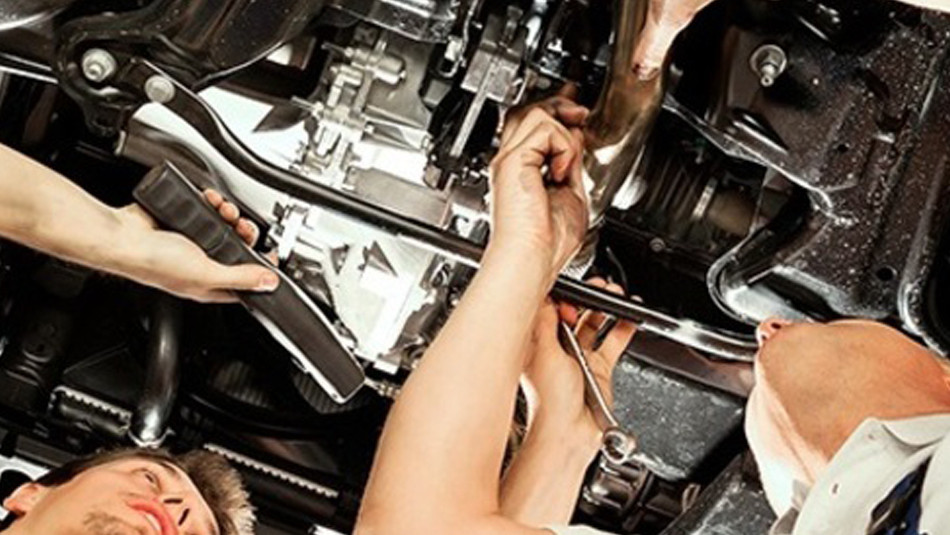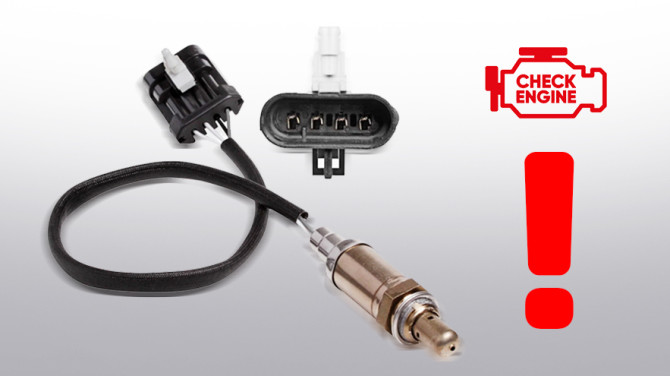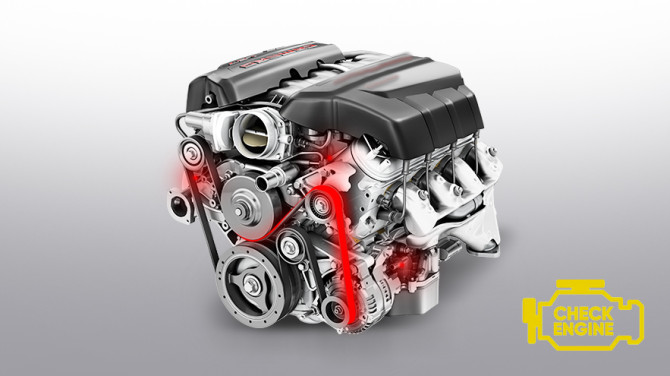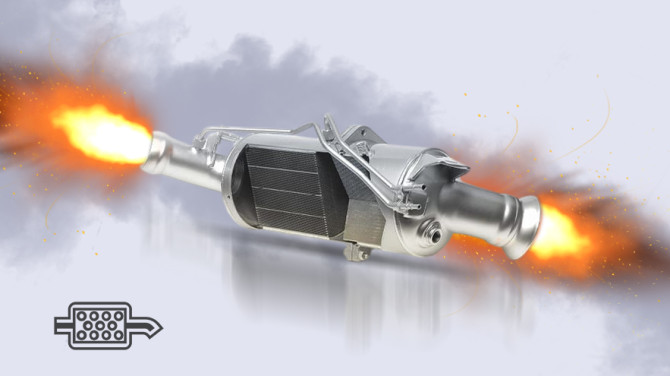Checklist: Steering diagnosis - how to check the steering rack

A very important characteristic of any car is its handling and safety. These two points are closely related because it is dangerous to drive a car that responds poorly to steering wheel rotation or has some more serious malfunctions.
Every car has a steering system, but the type and design may differ slightly. Previously, steering gearboxes were used to turn the steered wheels. However, there are fewer and fewer cars with gearboxes on the roads, and new models use systems where the main unit is a steering rack.
Steering systems are divided into three main categories:
- Without power assistance;
- With hydraulic power steering;
- With electric power steering.
The first type is straightforward - nothing helps the driver turn the wheels, just muscular strength. But let's talk a bit more about the other two types.
Hydraulic power steering
Power steering systems operate by pumping hydraulic fluid and distributing it according to the direction of rotation of the steering wheel. They consist of three main units:
- Steering rack. The rack consists of a body, a steering shaft (rod) and a distributor. The distributor and the stem form a worm gear: the driver turns the steering wheel, the rotational movements are transmitted to the distributor through the steering column shaft, the distributor is engaged with the teeth of the stem, which can move to the right or left. That is, the task of the steering rack is to convert rotational movements into reciprocating movements. The stem is connected to the wheels through steering rods and tips that pull/push the wheels in the desired direction;
- Steering column. The column is an intermediate link between the steering wheel and the rail. The design of these mechanisms can be different, but the essence is always the same: it is a shaft or several shafts that are connected by small gimbals;
- Power steering pump. The power steering pump can be considered a distinctive feature of such systems. Its task is to create hydraulic oil pressure in the system and supply it through hoses to the steering rack distributor. Depending on the direction of steering, the distributor directs the oil to the desired rack chamber and makes life easier for the driver. The power steering pumps are driven by a belt through a pulley. That is, in fact, the unit works when the car engine is running.
There are also electrically driven hydraulic pumps. In them, the internal combustion engine replaces its own electric motor. This type of power steering is called electro-hydraulic power steering.
Electric power steering
Electric power steering also has a steering rack and column. And although they differ in design, they perform the same tasks. The main difference lies in the amplifier, which is an electronic control unit, sensors, and an electric motor. This electric motor is connected to the rail rod and helps it move in the right direction. The direction of rotation of the electric motor and the degree of auxiliary force is determined by the ECU, which makes calculations based on sensor data.
None of the above systems can work forever, so eventually repairs will be required. But before repairing, it is necessary to make a high-quality diagnosis to accurately identify the problem and “not to treat the healthy.”
Diagnostics for vehicle steering
The direction of fault diagnosis depends on the driver's complaints and the type of power steering. In any case, an accurate diagnosis of the steering system is impossible without two important factors: it should be performed by a qualified specialist with specialized tools and equipment.
Let's go through the most common complaints and diagnostic methods:
1. Knocking. Knocking from the rack when driving over bumps or turning the steering wheel is the most common complaint. There can be several reasons for knocking: wear of the gear sector of the shaft, misalignment of the rack (shaft pressing mechanism), wear of bushings, wear of cardan joints on the column shaft, etc.
For diagnosis, the specialist:
- raises the car on a lift;
- visually inspects the rack and boots through which water and dirt can enter the unit in case of damage or poor fixation;
- removes the boots, visually inspects the rod with the wheels turned in different directions;
- mechanically shakes the steering shaft of the rack in different positions to find the cause and determine the extent of the problem;
- checks the play in the universal joints. Joint play can cause knocking and a feeling of "jamming" or disappearance of auxiliary forces.
- if the problem was not found earlier, the car's suspension should be diagnosed.
2. Decrease in hydraulic fluid level in the reservoir, fluid leakage. This varies. Sometimes car owners complain about fluid leakage that they have already detected on their own. But sometimes the leak location is not quite obvious, it can't be found quickly, and the problem is signaled by a decrease in the amount of fluid in the reservoir.
The check is carried out as follows:
- the reservoir is inspected for damage;
- the power steering pump is visually checked. The leak may be on it if the sealing rings have stopped coping with their tasks;
- the steering rack is inspected: connections, housing, and boots. Leaks are most common in these places;
- if everything is fine according to the previous points, all hoses and pipes are checked. Some cars have design miscalculations that cause pipes to wear through. And sometimes a hose or pipe turns out to be unfixed due to an assembly error during previous repairs.
3. Power steering failure, its inconsistent operation, or incorrect operation. In this case, the course of diagnostics depends on the type of power steering.
Electric power steering diagnosis is carried out by connecting diagnostic equipment and a computer with special software to the rack. The specialist conducts diagnostics and reads errors.
Sometimes after this, it's enough to put on a loose connector, having previously figured out the reason for this phenomenon. But most often, the rack with the amplifier is removed from the car and transferred to the workshop for further diagnosis and defecting.
Hydraulic power steering diagnosis:
- Checking the condition of the drive belt and its tension. If the belt breaks, the driver will definitely notice it. But the weakening of the tension may well be the cause of unstable operation not only of the power steering pump but also of the air conditioner compressor and generator. The reason: the belt slips on the pulley without rotating it. The belt, by the way, heats up from this and can break. An overtightened belt is also bad because it increases the load on the bearings of the driven units.
- The fluid level in the reservoir and its condition are checked. Sometimes it happens that the driver does not notice a decrease in the level in the reservoir. If there is little fluid, the system will start to work in jerks. This is also harmful to the pump itself because it is lubricated with oil. Little oil = poor lubrication and accelerated wear. If there is a problem with the fluid level, the mechanic proceeds to search for a leak.
- Measuring pressure in the power steering system using a specialized station. It is quite possible that the problem lies in the pump itself and it does not generate the pressure necessary for stable operation of the system. This is why the measurement is taken;
- If the pressure measurement showed low values, the pump is removed and transferred for disassembly and defecting. Depending on the results of diagnostics in the workshop, repair or replacement of the unit may be required.
4. Steering jamming or failure to return to neutral position. It should be noted right away that the steering wheel may not return to its original position after turning due to incorrect wheel alignment angles. If this is the case, the problem can be solved after wheel alignment. Also, the rack can start to jam after hitting a deep hole at speed, hitting a curb, or after an accident.
Rack diagnostics in case of jamming:
- The mechanic tries to determine the position in which there is jamming by turning the steering wheel;
- The cardan joint is inspected for play. High play indicates wear of the cross piece, which can lead to jamming;
- The boots of the steering rods are removed, and the shaft is inspected for bends. If there are bends, only replacement of the shaft or the unit as a whole will help, because finding a rod for certain rack models can sometimes be difficult or impossible;
- If the problem was not detected, the rack is removed from the car and transferred to the workshop for defecting. There may be a problem with the distributor or rod teeth. Unfortunately, it is impossible to determine this on the car.
Example: Audi A4B8 steering repair
The owner of an Audi contacted us with a complaint according to which the power steering does not work every time he turns the steering wheel. When it does work, however, it does so steadily. The computer diagnostics did not show any problemsón, there are no errorsón on the dashboard. Let's find out what's wrong. The mechanic picked up the caród and proceeded to diagnose the transmission:
If the problem is not detected, the transmission is removed from the vehicle and taken to a workshop to check the fault. There may be a problem with the distributor or the rod teeth. Unfortunately it is not possible to determine this on the vehicle.
- checked the backlash;
- inspected the anthers and shaft;
- checked the connection of the connectors to the power steering
No problems were found. Next, the specialist checked the condition of the driveshaft and everything became clear: the crosspiece was worn out and had a large play.
After agreeing on the work with the car owner, the technician removed the part of the shaft with the driveline, replaced the crosspiece with a new one and reinstalled it. After that, the backlash “went away,” and the stable operation of the amplifier returned.
The increased play on the shaft's universal joint caused the steering wheel to rotate idly at first, so the power steering did not work and the wheels did not turn. After replacing the crosspiece, the system worked properly and predictably.
Where can you get a steering gear diagnosis?
A vehicle's steering system affects driving comfort and safety. Like everything else in the car, it has its own lifespan, which can be reduced due to untimely maintenance, damage to the anthers, or other damage that cannot be predicted.
To keep the rail, speaker, and amplifier working properly and for a long time, you need to periodically visit a specialized service station and perform a preventive inspection that will help prevent breakdowns or eliminate existing problems at an early stage.
However, if you have already noticed that problems have appeared, you should contact a car service center that employs specialists with the necessary diagnostic tools and equipment as soon as possible. Professional diagnostics will allow you to accurately determine the true cause of the breakdown and eliminate it without interfering with serviceable components.
STS specialists have been diagnosing and repairing car steering systems for more than 20 years. During this time, we have become experts not only in repair, but also created diagnostic equipment for diagnosing power steering racks with power steering/electric power steering, which we use in our work.
Our experience helped us to develop and create our own brand of MSG steering racks, which are well respected by customers for their optimal price/quality combination.
We always have a wide range of units and components in our warehouse for high-quality repairs. If your rail is beyond repair, our specialists will offer suitable replacement options: an original new or reconditioned rail. We restore the units using high-quality components, so you get a practically new rail, but at a more affordable price.
Our team is always ready to offer several solutions for you to choose from, so you can be sure that the problem will be solved.







